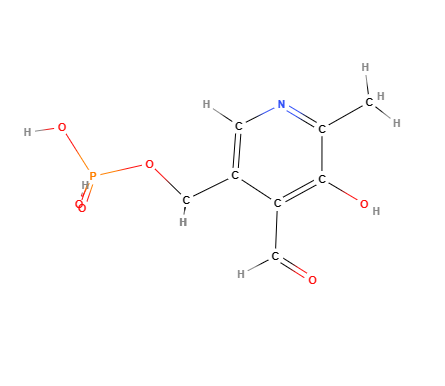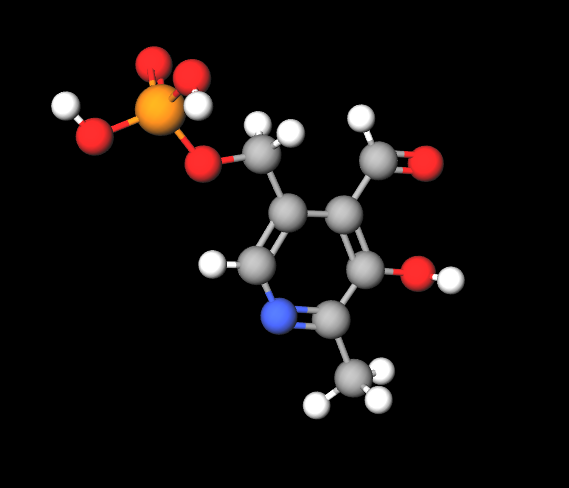Tiiips app: ingredients detective.
Free from Play Store!


Tiiips app: ingredients detective.
Free from Play Store!


| "Descrizione" by Al222 (18869 pt) | 2024-Mar-29 10:44 |
Pyridoxal-5-phosphate (P5P), also known as the coenzymatic form of vitamin B6, is the active form of vitamin B6 in the body. It is essential for numerous metabolic processes, including amino acid metabolism, neurotransmitter synthesis, and energy production.
Main uses and benefits
Amino Acid Metabolism. P5P plays a crucial role in the metabolism of amino acids, essential for protein synthesis and maintaining nitrogen balance in the body.
Neurotransmitter Synthesis. It is vital for the synthesis of important neurotransmitters (1), such as serotonin, norepinephrine, and GABA, contributing to mood regulation, sleep, and cognitive functions.
Hemoglobin Production. P5P aids in the synthesis of hemoglobin (2), the protein in red blood cells that carries oxygen throughout the body, thus supporting blood health.
Immune System Health. It supports the immune system by regulating the production of antibodies and maintaining lymphocyte function (3).
Inflammation Reduction. It has been shown to contribute to reducing inflammation in the body (4), potentially benefiting conditions like arthritis.
Dietary Supplements. Often used in dietary supplements to ensure adequate intake of vitamin B6, especially for those who may have difficulty converting inactive vitamin B6 into P5P in the body.
Pyridoxal-5-phosphate is an essential and biologically active form of vitamin B6, offering a wide range of health benefits, from brain function to energy metabolism, making it a key component of a healthy diet and supplementation regimens.
Chemical Industrial Synthesis Process
It appears in the form of a white powder

 |  |
Molecular Formula C8H10NO6P
Molecular Weight 247.14 g/mol
CAS 54-47-7
UNII F06SGE49M6
EC Number 200-208-3
DTXSID4048351
Synonyms
References_____________________________________________________________________
(1) Adelufosi AO, Abayomi O, Ojo TM. Pyridoxal 5 phosphate for neuroleptic-induced tardive dyskinesia. Cochrane Database Syst Rev. 2015 Apr 13;(4):CD010501. doi: 10.1002/14651858.CD010501.pub2. PMID: 25866243.
Abstract. Background: Tardive dyskinesia is a chronic and disabling abnormal movement disorder affecting the muscles of the face, neck, tongue and the limbs. It is a common side effect of long-term antipsychotic medication use in individuals with schizophrenia and other related psychotic disorders. While there are no known effective treatments for tardive dyskinesia to date, some reports suggest that pyridoxal 5 phosphate may be effective in reducing the severity of tardive dyskinesia symptoms....Authors' conclusions: Pyridoxal 5 phosphate may have some benefits in reducing the severity of tardive dyskinesia symptoms among individuals with schizophrenia. However, the quality of evidence supporting the effectiveness of pyridoxal 5 phosphate in treating tardive dyskinesia is low, based on few studies, short follow-up periods, small sample sizes and inadequate adherence to standardised reporting guidelines for randomised controlled trials among the included studies.
(2) Kark JA, Bongiovanni R, Hicks CU, Tarassoff PG, Hannah JS, Yoshida GY. Modification of intracellular hemoglobin with pyridoxal and pyridoxal 5'-phosphate. Blood Cells. 1982;8(2):299-314. PMID: 7159754.
Abstract. The aldehyde forms of vitamin B6, pyridoxal and pyridoxal 5'-phosphate (PLP) have aroused interest as antisickling agents because of their ability to modify hemoglobin (Hb) and their low toxicity. To study their rate of formation and stability inside red cells, pyridoxal-Hb and PLP-Hb were measured in lysates from treated normal and sickle erythrocytes using isocratic high pressure liquid chromatography on Bio-Rex 70. The validity of this assay was confirmed by isoelectric focussing, fluorescence scans of reduced globin, and treatment of cells with pyridoxal 14C. Optimal conditions were described for treatment of whole blood with pyridoxal and washed erythrocytes with PLP. Although there was competition between 2,3-DPG and PLP, but not pyridoxal, for binding to Hb, depletion of 2,3-DPG prior to treatment was unnecessary. No special requirements were noted for the anticoagulants or buffers used. Sickle erythrocytes formed PLP-Hb more rapidly than normal erythrocytes, but pyridoxal-Hb appeared at the same rate in both types of erythrocytes. During incubation of treated erythrocytes in untreated plasma, the stability of pyridoxal-Hb varied inversely with the hematocrit, but PLP-Hb was stable at all hematocrits tested. The absence of hemolysis during a 4 day incubation of treated normal red cells implies that treatment with pyridoxal or PLP did not severely impair red cell metabolism.
(3) Huang YC, Chang HH, Huang SC, Cheng CH, Lee BJ, Cheng SY, Su KH. Plasma pyridoxal 5'-phosphate is a significant indicator of immune responses in the mechanically ventilated critically ill. Nutrition. 2005 Jul-Aug;21(7-8):779-85. doi: 10.1016/j.nut.2004.11.013. PMID: 15975484.
Abstract. Objectives: This study assessed the effect of vitamin B6 status on immune responses in mechanically ventilated, critically ill patients and compared the results with those of healthy controls.....Conclusions: Plasma PLP is a significant indicator of immune responses in human subjects. Further research is warranted to study whether vitamin B6 supplementation in critically ill patients improves their immune responses.
(4) Sakakeeny L, Roubenoff R, Obin M, Fontes JD, Benjamin EJ, Bujanover Y, Jacques PF, Selhub J. Plasma pyridoxal-5-phosphate is inversely associated with systemic markers of inflammation in a population of U.S. adults. J Nutr. 2012 Jul;142(7):1280-5. doi: 10.3945/jn.111.153056.
Abstract. Low vitamin B-6 status, based on plasma concentrations of pyridoxal-5-phosphate (PLP), has been identified in inflammatory diseases, including cardiovascular disease, rheumatoid arthritis, inflammatory bowel disease, and diabetes. Our objective was to examine the association between plasma PLP and multiple markers of inflammation in a community-based cohort [n = 2229 participants (55% women, mean age 61 ± 9 y)]. We created an overall inflammation score (IS) as the sum of standardized values of 13 individual inflammatory markers. Multivariable-adjusted regression analysis was used to assess the associations between the IS and plasma PLP. Geometric mean plasma PLP concentrations were lower in the highest tertile category of IS relative to the lowest (61 vs. 80 nmol/L; P-trend < 0.0001). Similarly, the prevalence of PLP insufficiency was significantly higher for participants in the highest compared with the lowest tertiles for IS categories. These relationships persisted after accounting for vitamin B-6 intake. Also, there were significant inverse relationships between plasma PLP and 4 IS based on functionally related markers, including acute phase reactants, cytokines, adhesion molecules, and oxidative stress. In addition, secondary analyses revealed that many of the individual inflammatory markers were inversely associated with plasma PLP after adjusting for plasma C-reactive protein concentration. This study, in combination with past findings, further supports our hypothesis that inflammation is associated with a functional deficiency of vitamin B-6. We discuss 2 possible roles for PLP in the inflammatory process, including tryptophan metabolism and serine hydroxymethyltransferase activity.
| Evaluate |